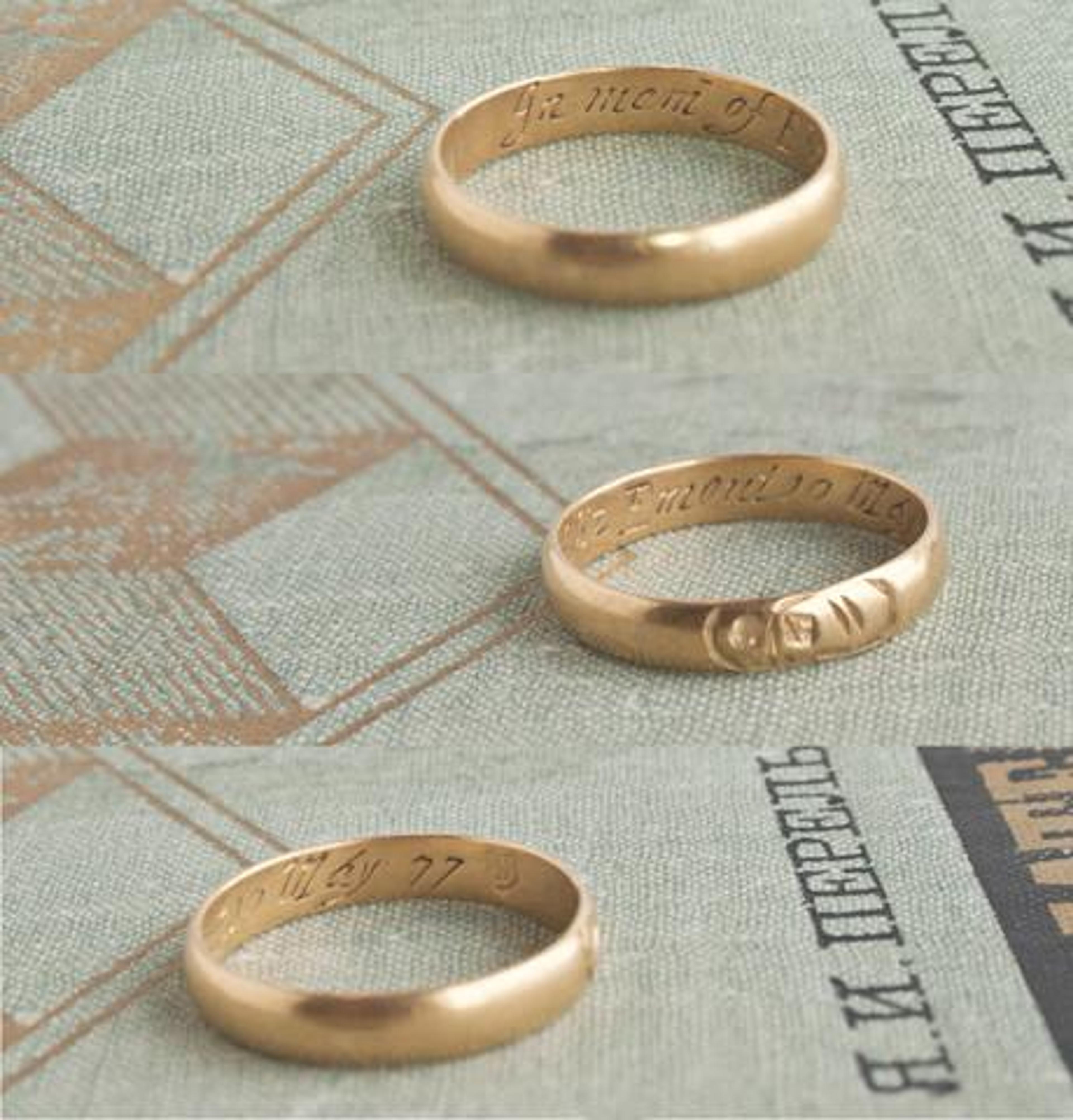
In the centuries leading up to the Victorian era, the rude brevity of human life was accepted—even advertised—in popular culture, as evidenced by this so-called "death's head" ring from 1677. It's a piece of memento mori jewelry, which borrows its name from a Latin phrase meaning "remember your death." It was widely prevalent during the 1600s and 1700s, and usually contained fatalistic symbols like skulls, coffins, or grim reapers. This particular ring was commemorative—the interior is inscribed "In mem of Eliz Emont 10 May 77".
thedetails
- Materials
18K gold.
- Size
It's a US size 8, and we don't recommend getting it re-sized.
- Age
1677.
Need more photos?
Send us an email to request photos of this piece on a model.

Aboutthe
StuartEra
1603 — 1714
A new era dawned when Queen Elizabeth — the last Tudor monarch — died without an heir. The monarchy was temporarily displaced by the Commonwealth of England from 1649 to 1660 by Oliver Cromwell, but was restored — aka "The Restoration" — as Charles II was invited to take the throne. His father, Charles I, had been beheaded in 1649, and most of the jewelry we see from this period was at least stylistically related to this controversial political event. During this time, discoveries and innovations transformed England and Scotland, which were conjoined after a long period of feuding. Coffee became a new trendy beverage, with 600 coffeehouses in London all catering to a different type of clientele. This imported novelty beverage was possible because of the UK's rapidly expanding worldwide trade network. Not yet interested in acquiring territories, the island nation focused instead on making a fortune exporting wool and importing goods like slaves, sugar, and tea. Everyone (except the enslaved people, of course) benefited from the new merchant class that arose, and in the process the Royal Navy became the most powerful in the world. The look of London changed, too — after the Great Fire of 1666, Christopher Wren was hired to rebuild the city's damaged churches, with his greatest accomplishment being St. Paul's Cathedral.